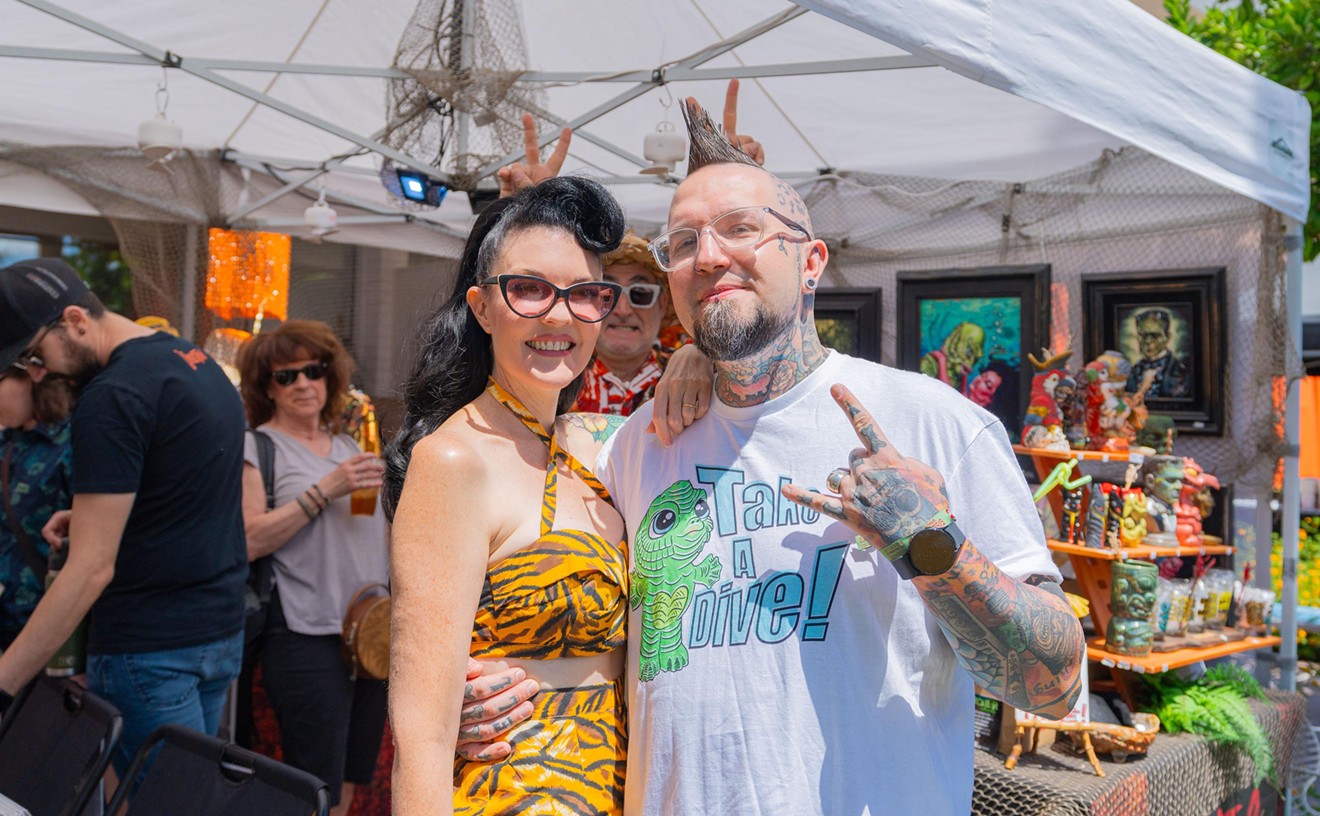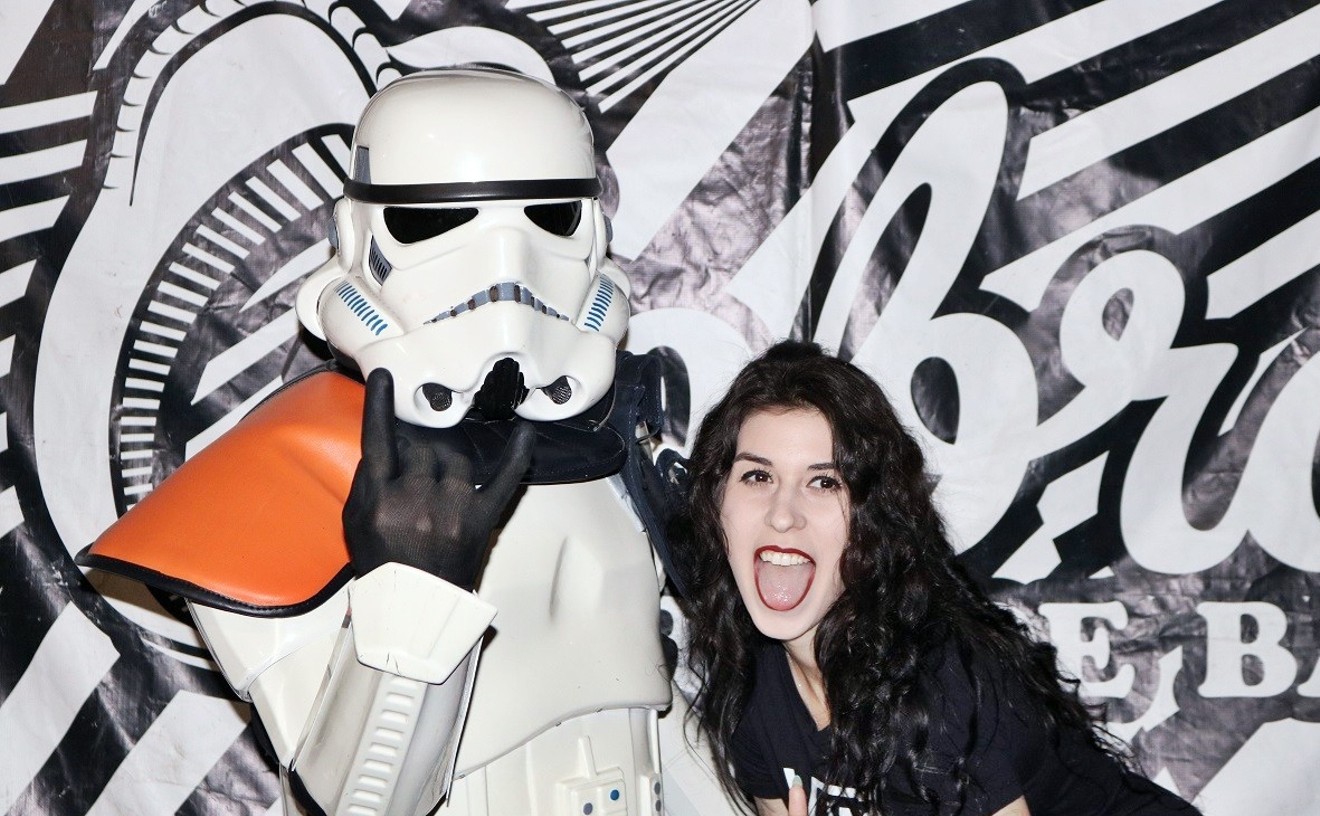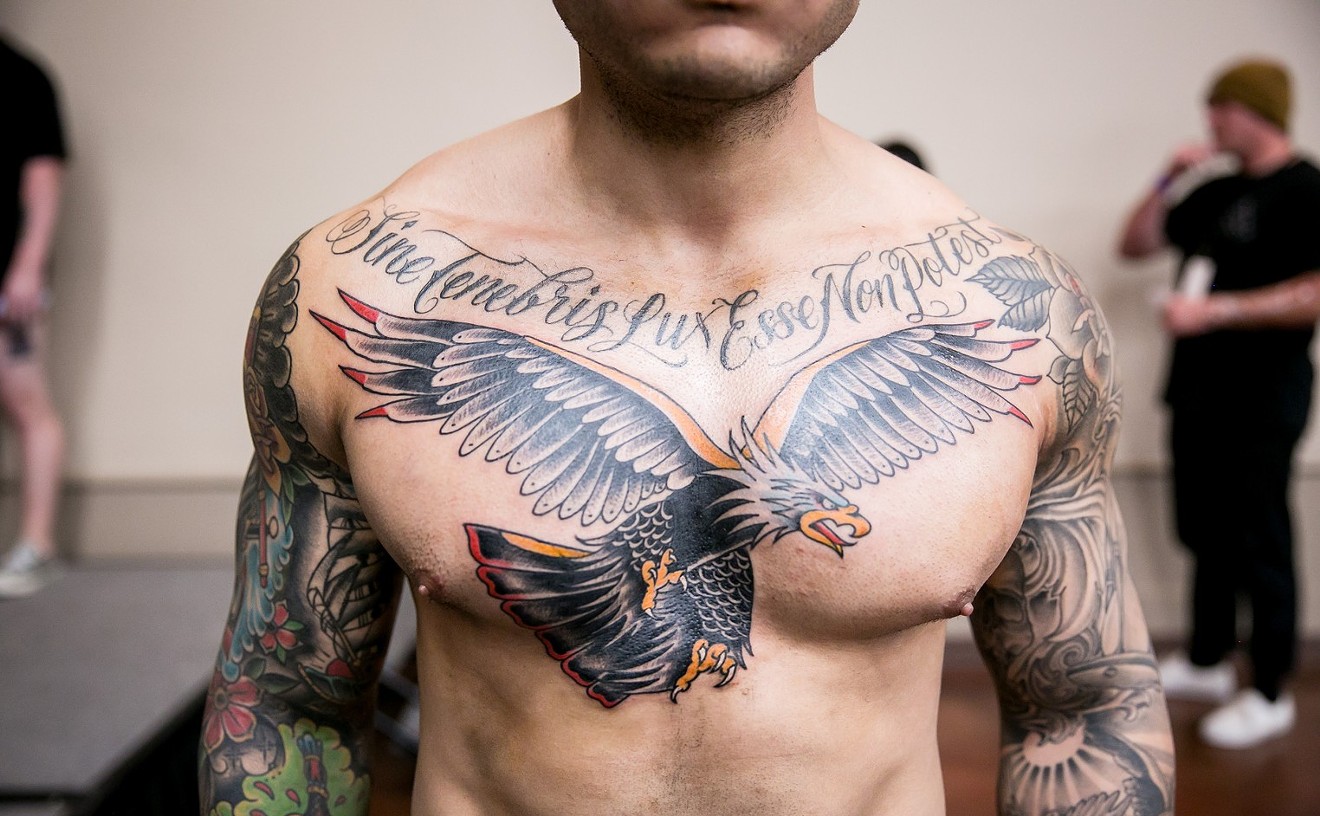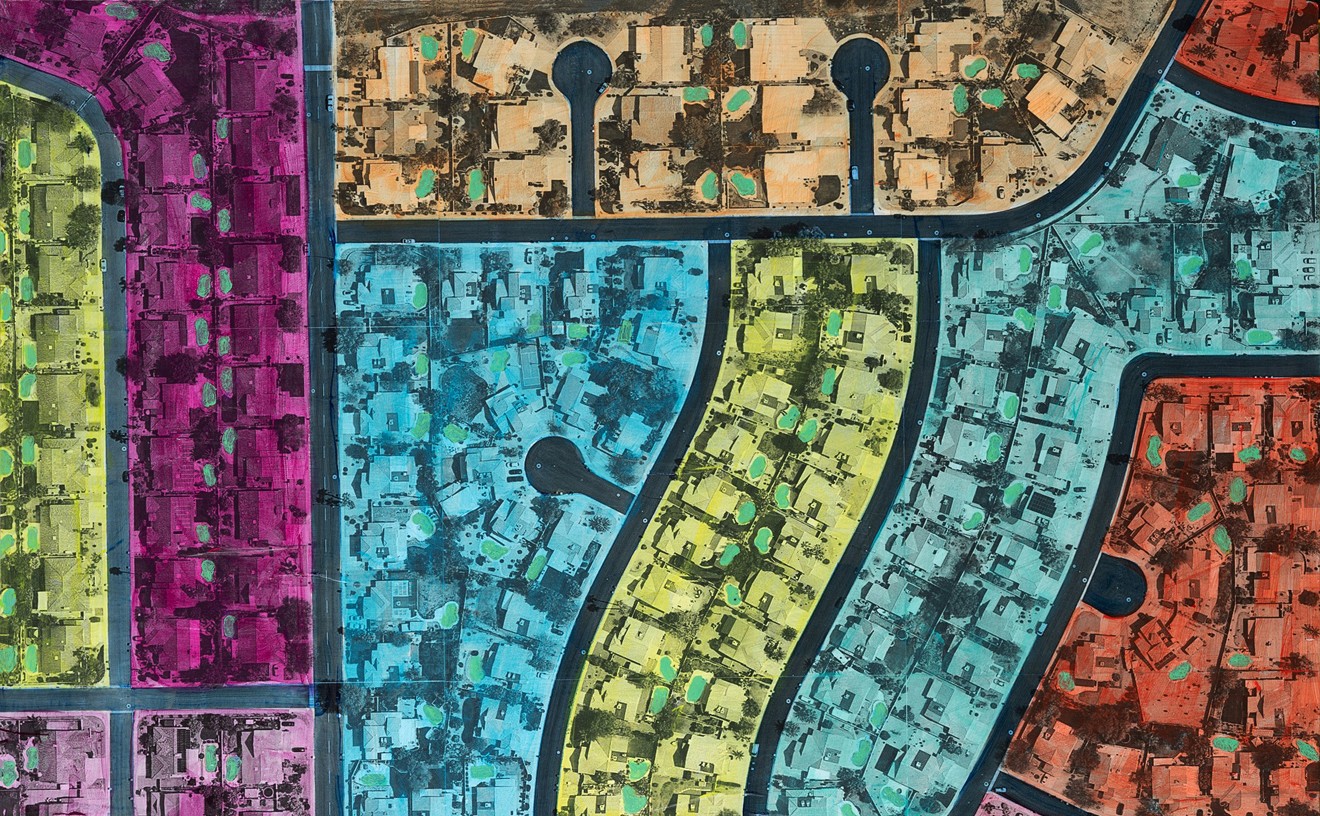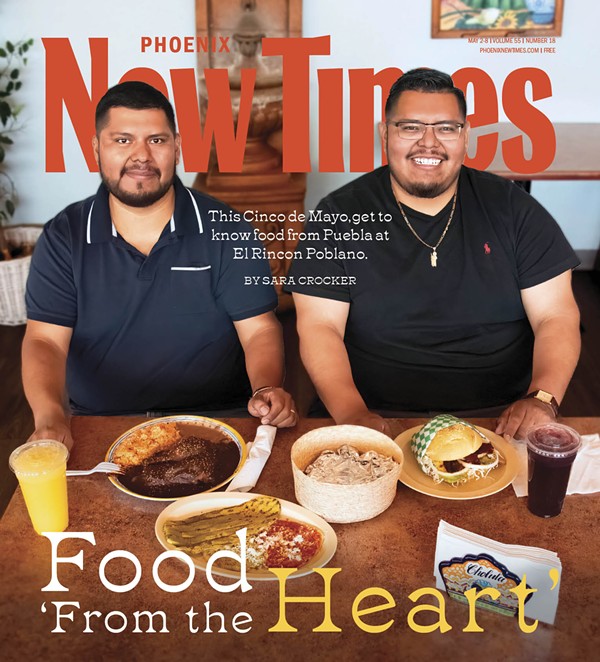"Dennis Oppenheim: Alternate Current" at the ASU Art Museum: The diversity of Dennis Oppenheim's 37-year investigation of the natural and manmade is on display here. Scale models and drawings from the late 1960s show how Oppenheim transformed landscape into sculpture by pruning hedges, digging holes in the earth, and crisscrossing the ground with 12-inch-thick concrete pipes. More recent works are artificially animated by electricity and machinery causing humanlike marionettes to dance, and animal forms to breathe or shoot flame. In Lightning Bolt Man, even the elemental forces of lightning, which have impaled and struck dead two fiberglass human figures, are faked. The figures don't glow from the lightning strike but instead from electricity supplied by the visible extension cord and outlet in the gallery wall. Through February 5, 2005. ASU Art Museum in Tempe, southeast corner of Mill Ave. and 10th St., 480-965-2787. -- R.N.
Sculpture in the Streets: The streets of downtown Mesa are filled with teens playing soccer, dogs playing Frisbee, prancing horses, children gardening and chickens perched on pigs. It sounds very Main Street, Disneyland -- but instead it's Mesa's Main Street, between Country Club Drive and Mesa Drive, that will be inundated with a display of more than 70 sculptures 'til the snowbirds fly away. The sculpture project features work from artists across the country and also includes two privately owned pieces, as well as 22 pieces from the city's permanent collection. A number of sculptures are also located inside 12 West Gallery, 12 W. Main St.; Mesa Art 'N Framing Gallery, 48 W. Main St.; and the Imbeau Gallery, 119 W. Main St. Through April 15, 2005. -- A.Y.
"Arab Americans in Arizona" at Mesa Southwest Museum: This exhibition explores the migration of Arabic-speaking people to Arizona since the latter part of the 19th century, with a focus on examining the reasons that different nationalities from the Middle East chose to come to Arizona. Some were seeking opportunity and some were escaping asperity in their native lands; this is reflected in the diversity of the various Arab-American communities in central Arizona. The exhibition details the differences in each community, including religious beliefs, social customs, dress, family structure and language, and how those traditions have been assimilated into American culture. In addition to costumes, musical instruments, jewelry, calligraphy and historical items, the exhibition also shows the economic and cultural contributions the groups have made here. Through April 2005. Mesa Southwest Museum, 53 N. Macdonald, Mesa, 480-644-2230. -- A.Y.
Seventh Avenue Streetscape: The new light box installation on Seventh Avenue north of Indian School Road is not your typical public art project. Unlike most, its artwork will change twice a year, giving the neighborhood a vibrant boost and artists a round of opportunities to get their work out on the street. The revitalization project is one of the city's liveliest to date and proof that there is still creative energy -- and, more important, support for it -- in the Phoenix Office of Arts and Culture. Composed of three large, double-sided Plexiglas panels lighted from inside and placed within a newly landscaped plot, the artworks on display are actually reproductions of paintings by local artists Quetzal Guerrero, Elizabeth Pfeiffer and Erin Sotak. Selected by a panel that included the area's business owners and residents, the location has actual potential to become a local gathering spot -- especially as the panels change every six to eight months, earning the site its intriguing tag line of "an ongoing urban gallery." Current works up through December, intersection of 7th Ave. and Glenrosa, Phoenix, 602-262-4637. -- G.C.C.





